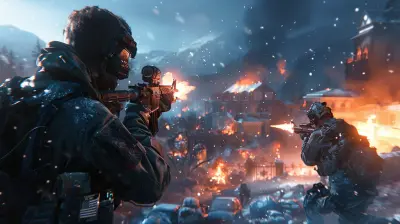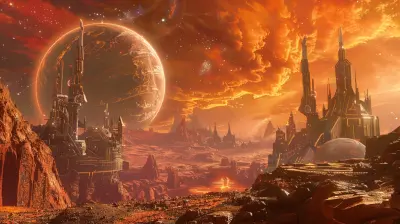The Evolution of Boss Battles From 8-Bit to Now
30 September 2025
When you think back to your earliest gaming memories, chances are you remember a boss fight. Maybe it was Bowser breathing that fiery pixelated breath, or perhaps it was Dracula morphing into some nightmare creature in Castlevania. Boss battles have been more than just a checkpoint in a level—they're milestones, tests of skill, and sometimes absolute rage-fests.
So, how have boss battles evolved from those humble 8-bit origins to the cinematic showdowns we see today? Grab a snack, plug in your nostalgia cord, and let’s talk about it.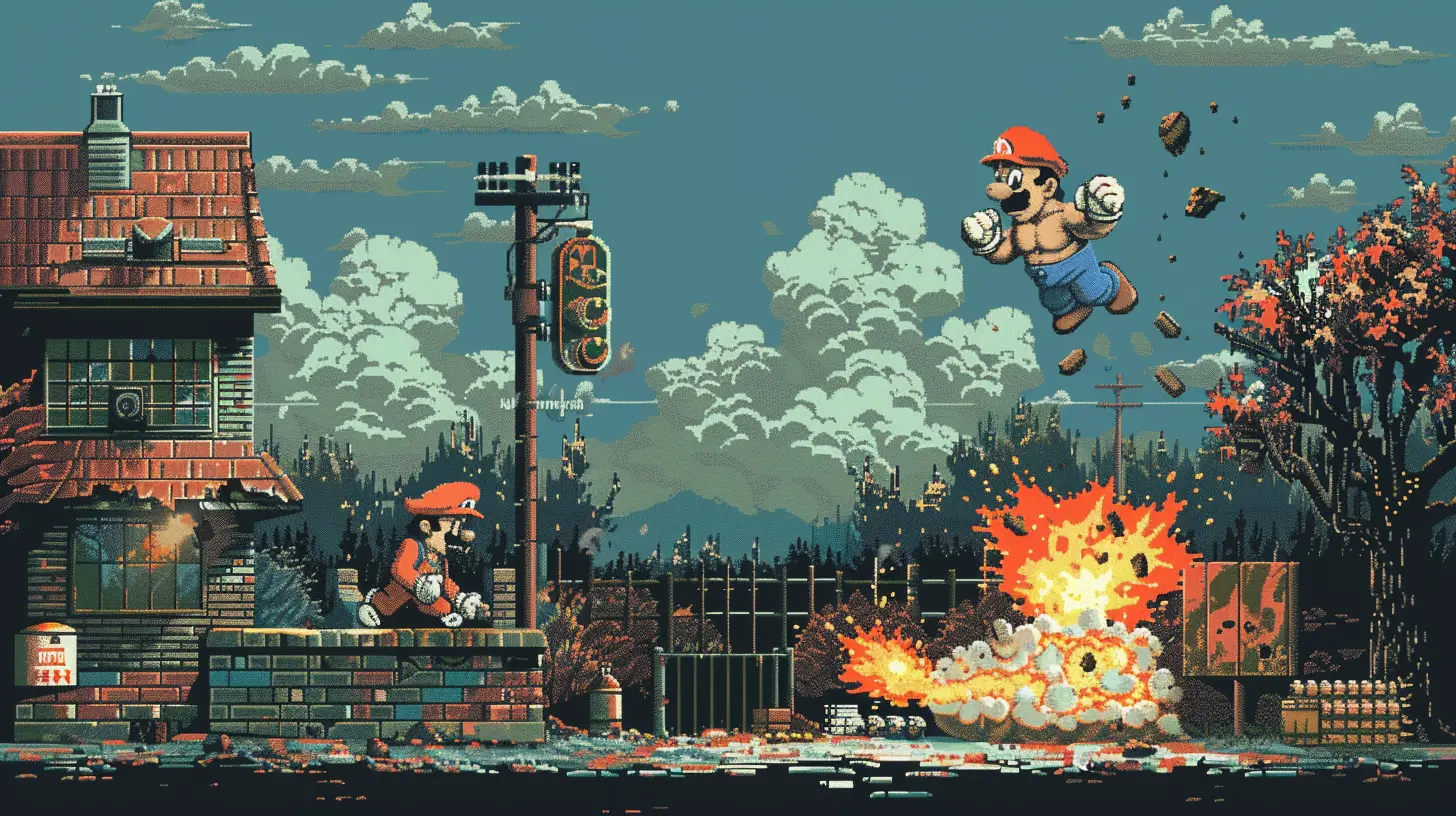
What Even Is a Boss Battle?
Before we dive into the evolution, let's get on the same page.A boss battle is basically a showdown with a super-tough enemy, usually at the end of a level or storyline arc. These battles are meant to challenge you in ways regular enemies can’t. Think of them as exams after a semester of fighting grunts.
They often require you to:
- Use everything you’ve learned so far
- Pay attention to attack patterns
- Time your movements and attacks just right
Boss battles have always been a way to separate the button-mashers from the true gamers. But trust me, the way they’re delivered now versus back in the day? Night and day.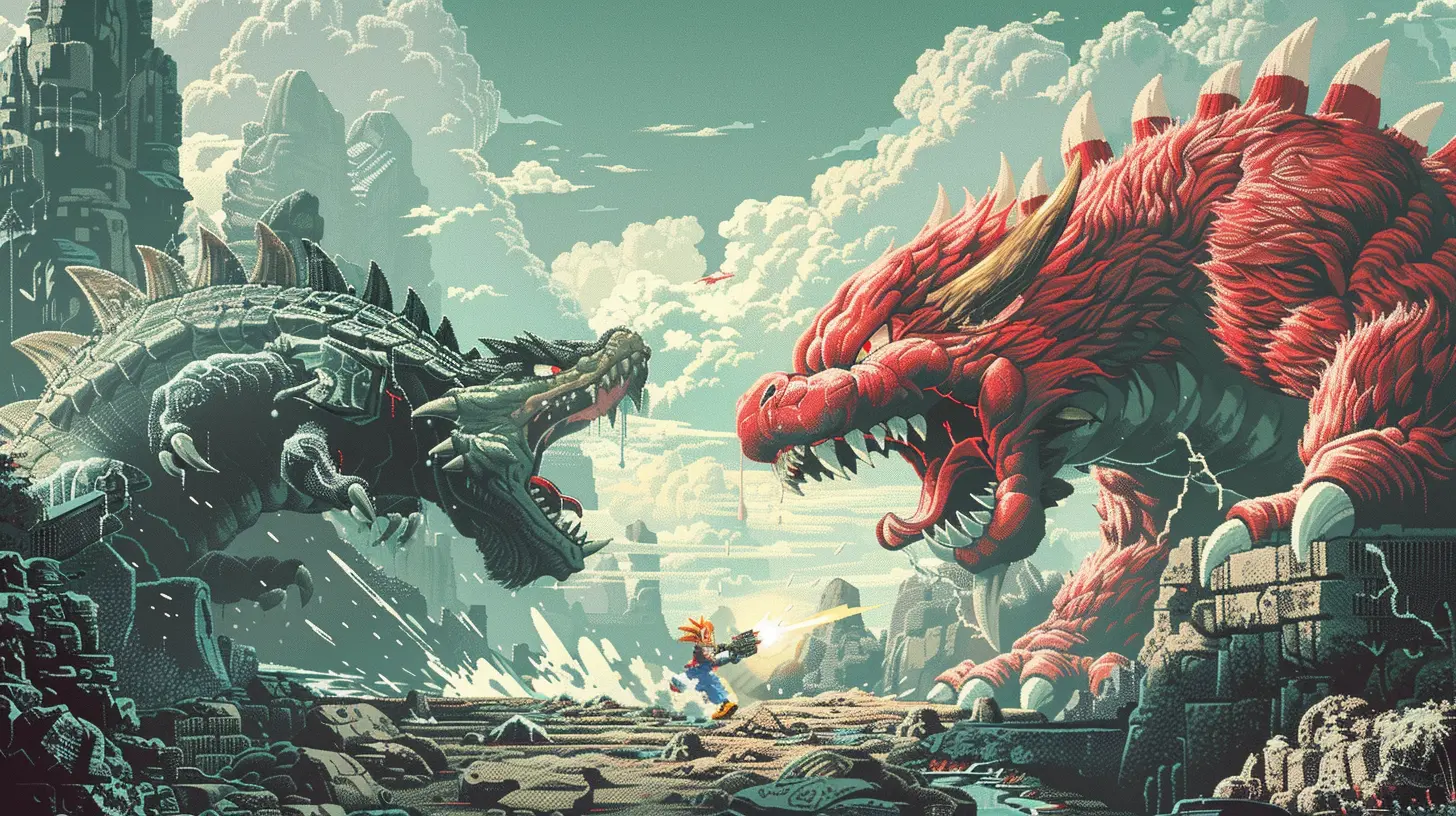
The 8-Bit Era: Simplicity With a Side of Stress
Let’s rewind to the late '80s. The 8-bit era was all about tight hardware limitations. Developers didn’t have the luxury of fancy graphics or expansive soundtracks. But you know what they did have? Ingenuity.Pixelated Kings of Pain
Bosses in the 8-bit days were brutal. Not because of complex AI, but because one wrong move usually meant instant death. Think Mega Man, Contra, or Ninja Gaiden. These bosses had:- Predictable patterns
- One or two attacks
- Tons of damage if they hit you
If you didn’t "git gud," as the modern phrase goes, you weren’t going to make it.
Why were they so hard though? Well, part of it was to stretch game length. You only had a few levels, so bosses were made tough to keep you engaged (and raging) for longer.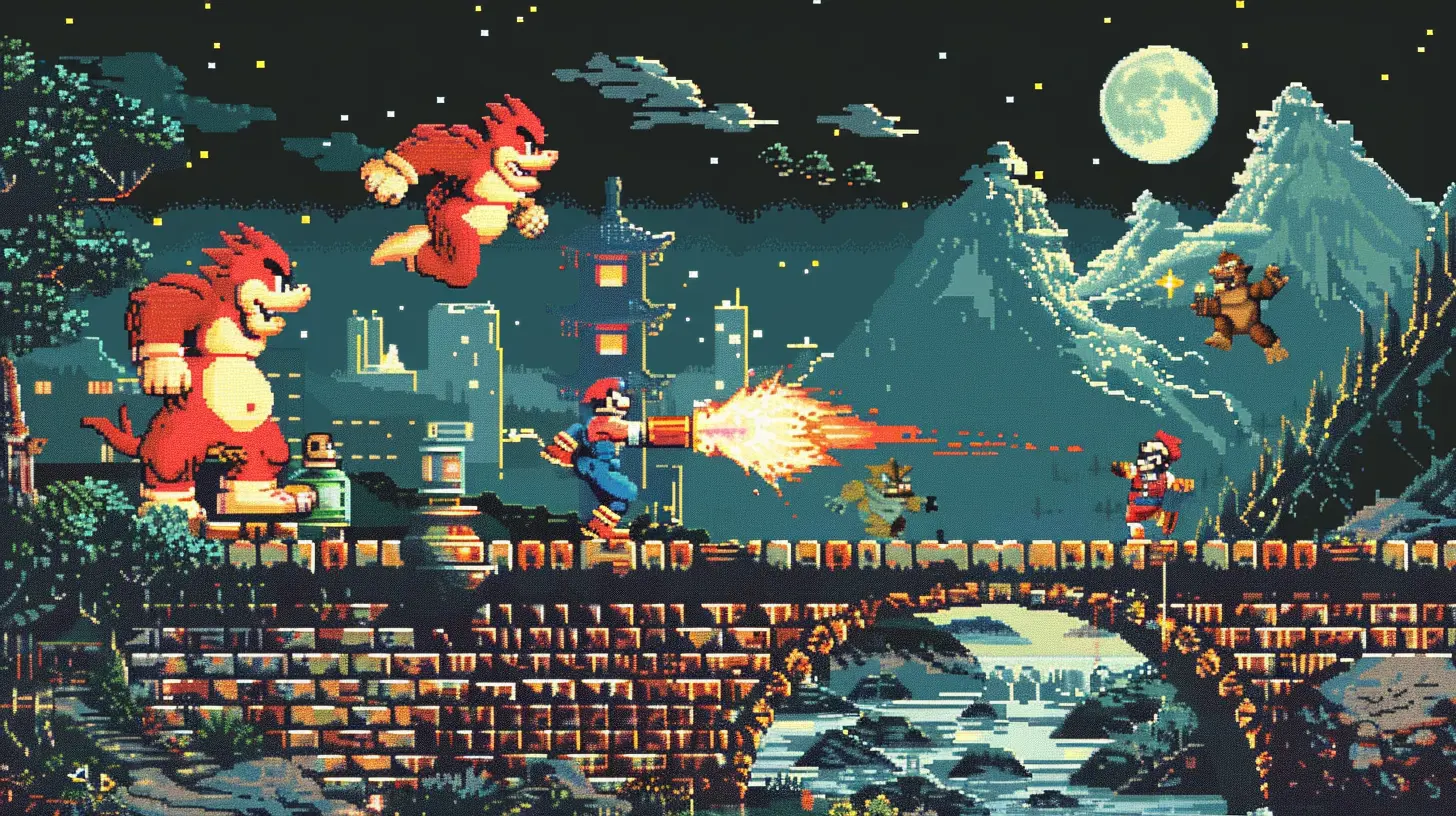
The 16-Bit Era: Bigger, Better, Badder
Enter the era of the Super Nintendo and Sega Genesis. Games were louder, more colorful, and developers had more wiggle room. Bosses became more sophisticated—but still pretty unforgiving.Multi-Phase Mayhem
Suddenly, bosses weren’t just one-trick ponies. They had phases.Take Final Fantasy VI’s Kefka, for example. By the time you faced him, he had evolved from a goofy villain into a god-tier monster with multiple forms. Or how about the towering monstrosities in Super Metroid like Ridley?
This era brought in:
- Dialogue before fights (trash talk, anyone?)
- More advanced animations
- Larger-than-life sprites
Plus, the music? Absolute fire. Who didn’t get hyped when that boss theme kicked in?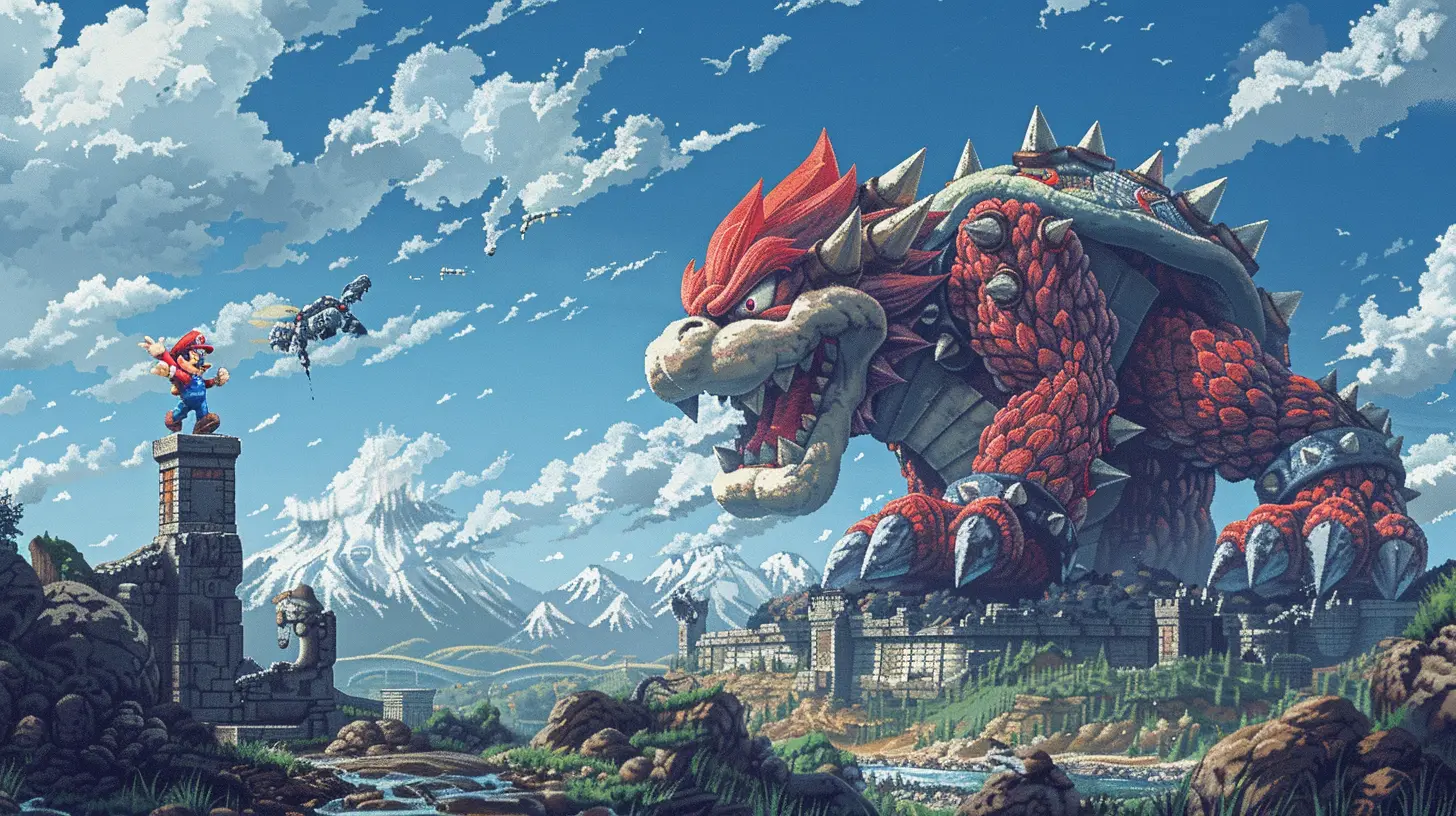
The Polygon Period: Bosses Get a 3D Makeover
Then came the big leap: 3D gaming. The PlayStation, Nintendo 64, and beyond brought bosses into a whole new dimension—literally.A New Perspective
With 3D environments, boss encounters changed dramatically. Games like The Legend of Zelda: Ocarina of Time introduced camera control and lock-on mechanics. Suddenly, you weren't just dodging left and right—you had to think vertically and spatially.Remember Metal Gear Solid’s Psycho Mantis? The dude read your memory card and made your controller vibrate. That was next-level fourth-wall-breaking boss design.
This generation was all about:
- Cinematic storytelling
- Puzzle-based boss mechanics
- Innovative uses of hardware
Bosses started becoming characters you remembered not just for their difficulty, but for their personality and the experience they delivered.
The Modern Age: Boss Battles as Spectacle
Fast forward to today, and boss battles are straight-up blockbuster events. With modern consoles pushing insane graphics and sound design, bosses aren’t just obstacles—they’re moments.Epic Setpieces and Emotional Payoffs
Today’s boss battles are dripping in cinematic flair. Whether it’s the God of War reboot pitting Kratos against Norse gods, or Elden Ring throwing titanic horrors at you, the emphasis is on immersion.We’re talking:
- Full voice acting
- Dynamic camera angles
- Real-time cutscenes
- Deep lore integration
And it’s not just about being “hard.” Modern bosses test everything: timing, strategy, reflexes, even your emotional investment. When you finally take down that antagonist you’ve been chasing for 30 hours? Oh man, the chills.
Indie Games: A Love Letter to the Classics
Surprisingly, some of the freshest takes on boss battles come from indie developers. Games like Hollow Knight, Cuphead, and Undertale bring old-school difficulty with new-school design polish.Why do they work so well?
Because they blend:
- Nostalgic difficulty
- Emotional storytelling
- Unique boss design
Undertale, for example, flips boss battles on their head by letting you spare rather than slay. It questions your motives while still challenging your skills.
These games prove you don’t need a AAA budget to create memorable and innovative boss fights.
Mechanics That Have Stood the Test of Time
Let’s pause and look at what makes a good boss fight—regardless of the era.Pattern Recognition
From Bowser to Malenia in Elden Ring, spotting patterns remains crucial. The moment when you finally "read" an enemy’s moves? That’s gaming glory right there.High Stakes
Bosses make you sweat because there’s something on the line—a rare weapon, a story twist, or just bragging rights.Evolving Challenge
The best bosses don’t just sit there and eat damage. They shift tactics, force you to adapt, and keep you on your toes.Memorable Design
Let’s be honest. The cooler the boss looks, the more we remember them. Whether it’s Sephiroth's angelic transformation or the haunting elegance of Lady Butterfly in Sekiro, style matters.Boss Battles as Storytelling Tools
Modern games blur the lines between gameplay and narrative, and boss fights are a big part of that shift.Take The Last of Us Part II. One boss isn’t just a fight—it’s a gut-wrenching moral dilemma wrapped in a duel. You’re not just pressing buttons; you’re wrestling with your own choices.
Or how about Shadow of the Colossus? Each boss is a puzzle and an emotional blow, making you question your role as the “hero.”
Boss fights aren’t just tests—they’re storytelling in action, often saying more than a cutscene ever could.
Multiplayer Bosses: The Raid Revolution
We can’t forget the rise of multiplayer boss battles. MMOs like World of Warcraft and Destiny changed the game entirely.Now, it’s not just about your reflexes—it’s about teamwork, coordination, and strategy. One player screws up a mechanic? Boom—wipe.
These bosses are designed to be:
- Complex
- Mechanically deep
- Pure collaborative chaos
It’s like being in a digital symphony where everyone’s got a part to play.
Where Do Boss Battles Go From Here?
So, what’s next for boss battles?As gaming tech keeps evolving, we might see:
- AI-powered enemies that adapt to you
- VR boss fights that feel terrifyingly real
- Procedurally-generated bosses with unique abilities each run
But no matter how far we go, the essence remains the same: that climactic feeling of overcoming the odds, beating the boss, and shouting, “YES! I did it!” (usually followed by a sigh of relief and maybe a victory snack).
Final Thoughts: Why We Love Boss Battles
Boss battles are more than just gameplay mechanics—they're memories. Whether it’s that first victory dance over King Koopa or the final duel in a 100-hour RPG, boss fights capture the essence of gaming.They’ve grown with us—from blocky pixel-beasts to fully voiced antagonists with tragic backstories and killer theme songs. But at their core, it’s still about the thrill of the fight.
So next time that health bar shows up at the top of the screen, don’t panic. Embrace it. Because behind every great game lies a boss that made you better.
all images in this post were generated using AI tools
Category:
Gaming NostalgiaAuthor:

Tayla Warner
Discussion
rate this article
1 comments
Drift Schultz
Boss battles have come a long way! From pixelated foes to epic cinematic duels, each era brings its own excitement. Keep leveling up, gamers!
October 10, 2025 at 4:14 PM

Tayla Warner
Absolutely! Boss battles have indeed evolved dramatically, reflecting advancements in technology and storytelling. Exciting times for gamers!
